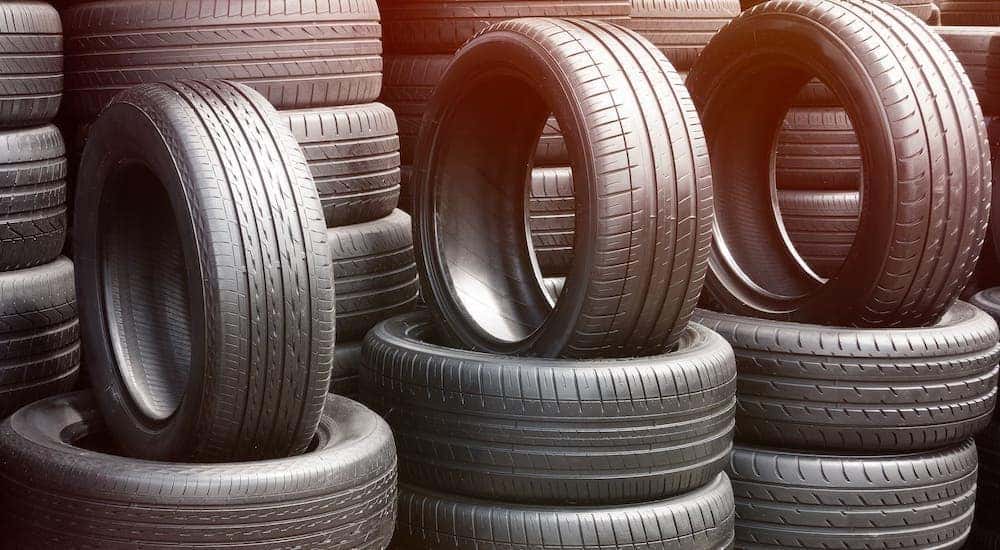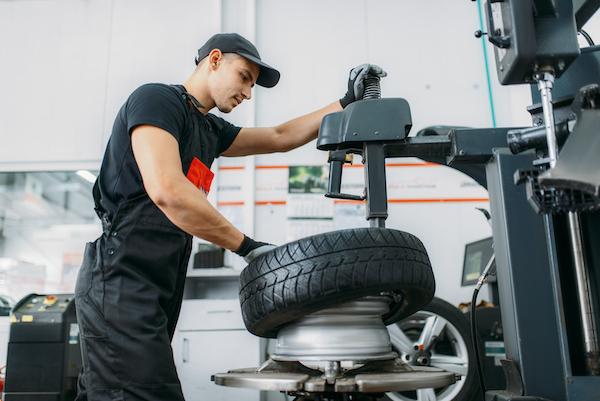Tire Service: Understanding Tire Stress Surveillance Equipments
Recognizing Tire Pressure Tracking Solutions (TPMS) is a vital facet of keeping optimal automobile efficiency and safety and security on the road. With developments in automobile technology, TPMS has come to be a basic function in contemporary automobiles, providing real-time details on tire pressure levels.

Relevance of TPMS
The value of Tire Stress Monitoring Equipments (TPMS) exists in their capability to enhance automobile safety and performance via real-time tracking of tire pressure levels. Preserving the right tire pressure is crucial for guaranteeing optimal handling, stopping, and overall safety of a vehicle. TPMS gives chauffeurs with prompt feedback on any kind of overinflated or underinflated tires, permitting for prompt modifications to be made.
Elements of TPMS
Comprising various crucial components, a Tire Stress Tracking System (TPMS) operates as an advanced security feature in contemporary lorries. The primary parts of a TPMS consist of sensors, a control module, and a warning indication. Sensing units are usually situated in the tire valve stem or connected to the wheel setting up, where they measure tire stress and transmit data to the control module. The control component procedures this info and causes a warning if it discovers considerably reduced pressure in any one of the tires. The caution sign, commonly an icon on the control panel, signals the driver to examine the affected tire or tires. Some progressed TPMS models likewise present the actual tire pressure analyses for each tire, providing vehicle drivers with real-time info to guarantee optimum tire efficiency and security. By keeping track of tire stress continuously, TPMS aids avoid accidents, reduces tire wear, and enhances fuel effectiveness, making it a crucial part for automobile security and performance.
Kinds Of TPMS

On the other hand, indirect TPMS depends on the car's wheel speed sensing units to check tire stress. This system spots underinflation by comparing the rotational rates of the wheels. Indirect TPMS is less pricey than direct TPMS, as it uses existing sensing units within the automobile.
While direct TPMS offers extra accurate readings, indirect TPMS is less complex in layout and normally needs much less maintenance. Both systems have their benefits and restrictions, and the option in between them often relies on factors such as cost, vehicle make, and individual choice. Comprehending the distinctions in between these 2 types of TPMS can aid car owners make notified decisions relating to tire maintenance and security.
TPMS Upkeep Tips
Efficient maintenance of TPMS is important for guaranteeing optimum efficiency and security of your vehicle. Routinely evaluating the TPMS sensing units for any type of damages or rust is critical. Make sure that the sensing units are tidy and free from debris that might hinder their performance. Additionally, it is recommended to check the sensor batteries occasionally and change them as needed to guarantee exact readings. Conduct routine examine the tire stress levels and contrast them with the TPMS analyses to ensure they are consistent. Rectify the system following the producer's guidelines if there are any type of discrepancies. Throughout tire turning or replacement, make go now certain that the TPMS elements are dealt with thoroughly to prevent any kind of prospective damage. Last but not least, if the TPMS warning light brightens on the dashboard, attend to the problem promptly by checking the tire pressures and the general system for any faults. By adhering to these maintenance tips, you can prolong the life-span of your TPMS and enhance see here the security of your driving experience.
Benefits of Proper Tire Stress
Preserving proper tire stress, as stressed in TPMS Upkeep Tips, is critical for gaining the numerous benefits associated with optimal tire stress levels. In addition, correct tire pressure guarantees even tire wear, prolonging the lifespan of the tires and advertising safer driving conditions. In final thought, the advantages of proper tire pressure go beyond simply tire longevity; they incorporate enhanced fuel effectiveness, enhanced security, better lorry efficiency, and total driving convenience.
Verdict
Finally, recognizing tire stress monitoring systems (TPMS) is important for preserving optimum tire stress and making certain automobile safety. By identifying the importance of TPMS, knowing with its components, understanding the various kinds available, adhering to proper upkeep suggestions, and recognizing the benefits of maintaining proper tire pressure, drivers can enhance their driving experience and lengthen the lifespan of their tires. Appropriate tire stress is vital to effective and risk-free automobile procedure.
